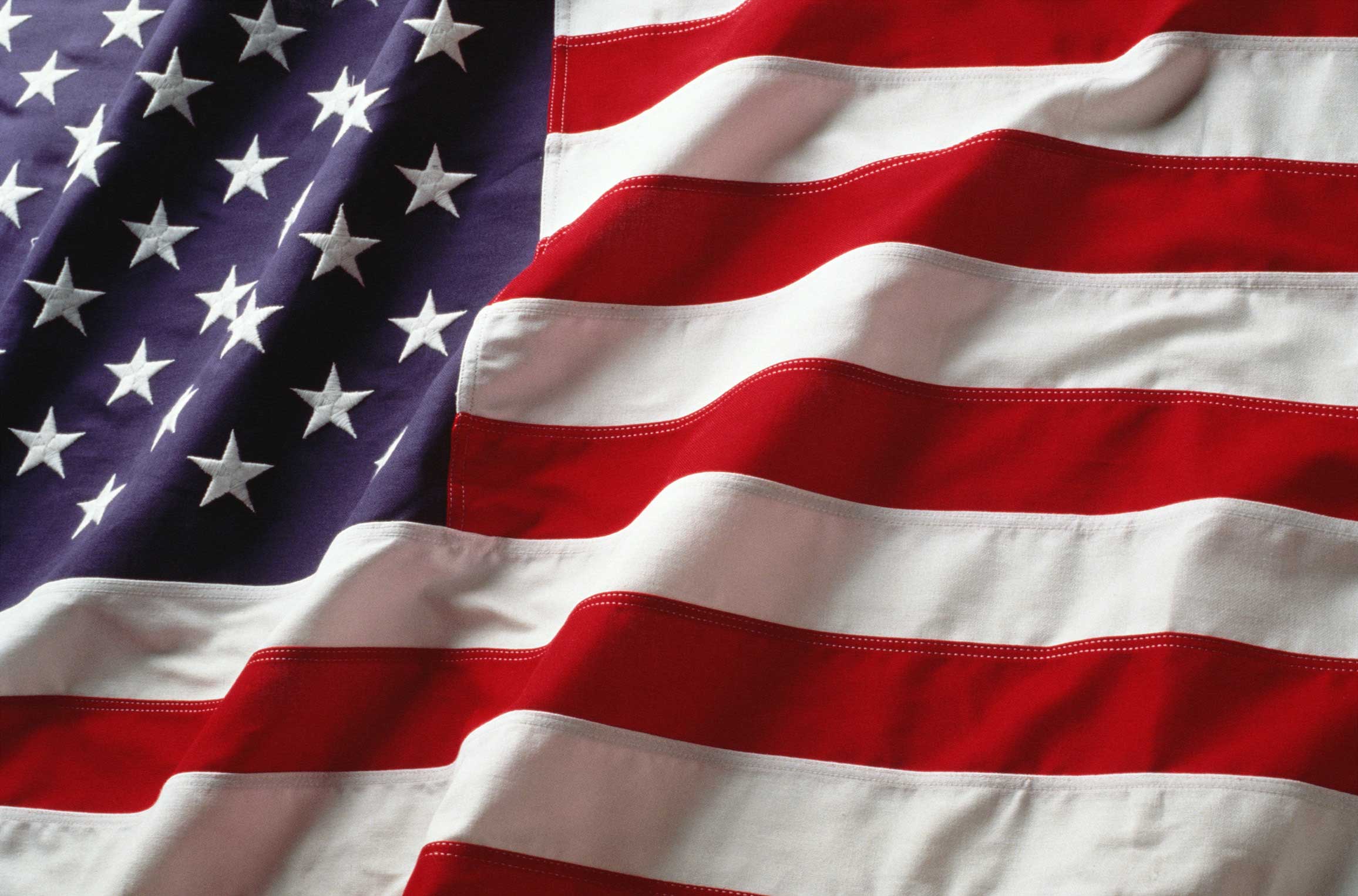Presidential Visit to Independence Hall - Calvin Coolidge - July 5, 1926
Related Posts
- Buy Tickets for The Constitutional Walking Tour of Philadelphia – See 20+ Sites on a Primary Overview of Independence Park, including the Liberty Bell and Independence Hall
- Independence Hall
- Liberty Bell History
- Philadelphia Sports Complex
- Ben Franklin Bridge Pedestrian Walkway
- Remembering Live Aid - The Day The Music Changed The World
Calvin Coolidge visits America's Birthplace to Celebrate 150 years of American Independence
On July 5, 1926, President Calvin Coolidge visited Philadelphia to take part in Philadelphia's Sesquicentennial Exposition and visit Independence Hall.
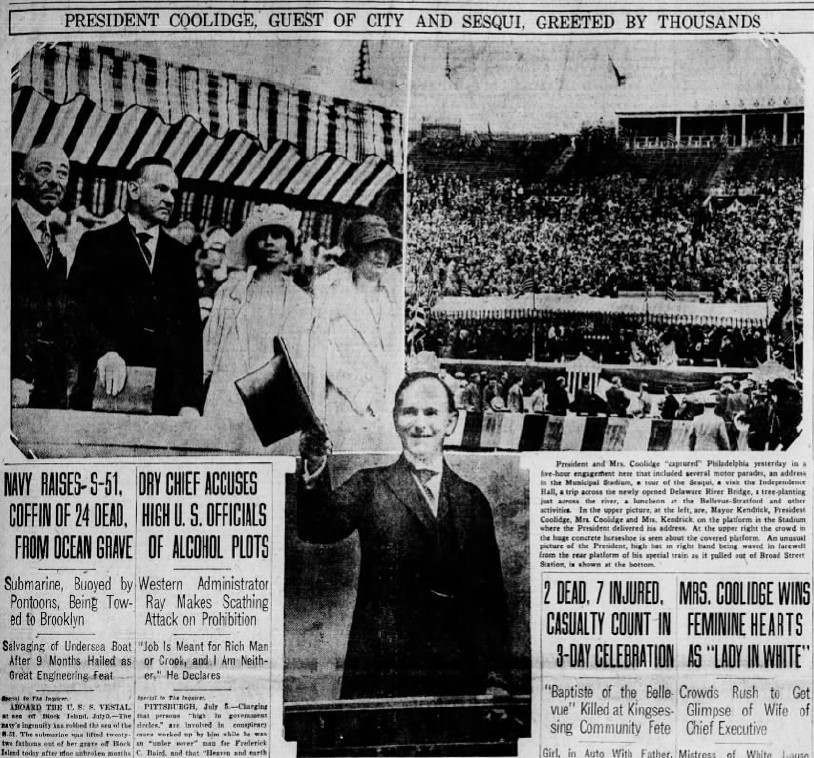
Philadelphia's Sesquicentennial Exposition was a World's Fair put on by the City to celebrate the 150th anniversary of The Declaration of Independence. It was the second World's Fair to take place in Philadelphia, coming 50 years after the Centennial Exposition in 1876 at which America's 100th Birthday was celebrated at the first World's Fair to be hosted by an American city.
By the time President Coolidge had arrived in Philadelphia by train on July 5, 1926, Philadelphia was already weeks into the Sesquicentennial celebration. After his arrival at the Broad Street Station, Coolidge traveled South to the exposition grounds which took place on land that is presently occupied by the Philadelphia Sports Complex and FDR Park. Preparations for the Sesquicentennial included a massive construction project that transformed the area and included the construction of stadiums, exhibition halls and even an 80 foot tall replica of the Liberty Bell which lit up and could be seen for miles.
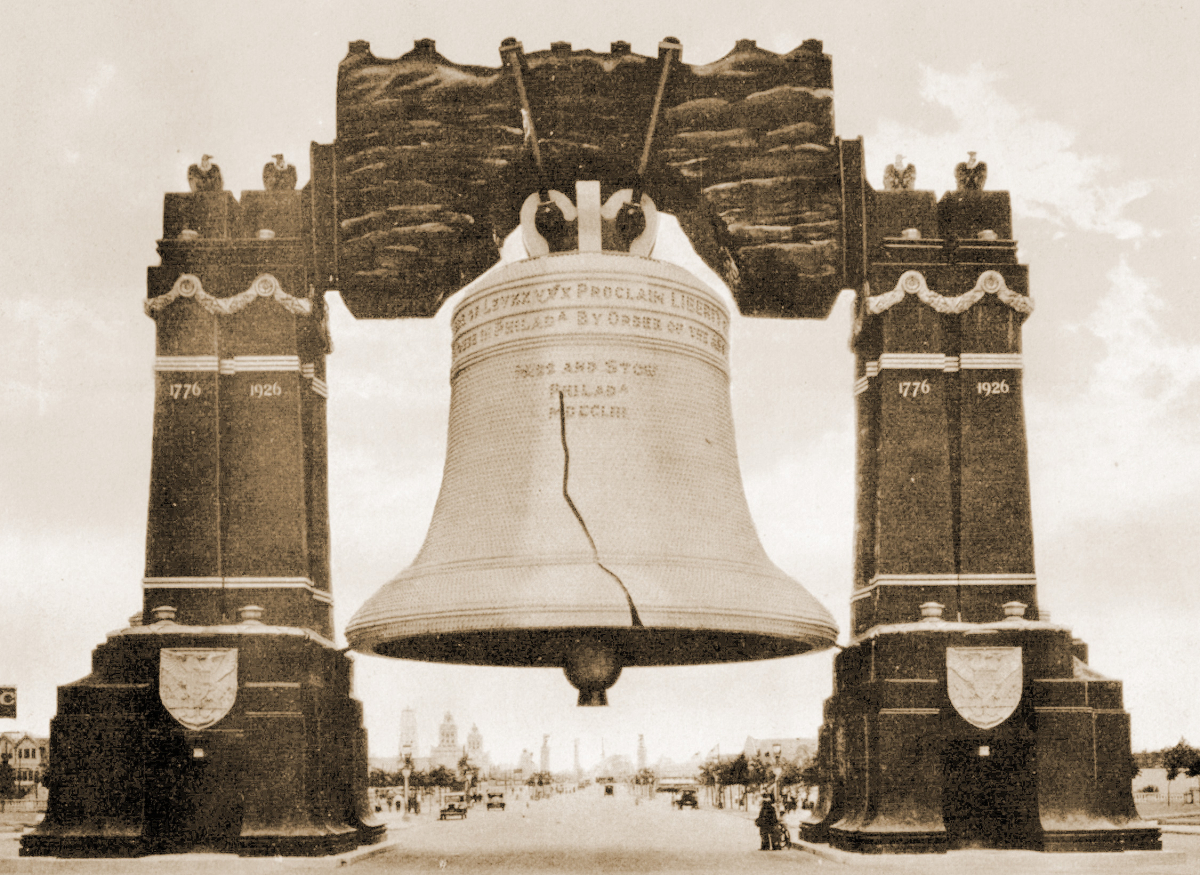
In the July 6, 1926 edition of The Philadelphia Inquirer, Coolidge's visit was the top story with numerous articles dedicated to his visit. Coolidge's first public appearance in Philadelphia was at the Sesquicentennial Stadium, where 35,000 people listened to a lengthy speech where according to the Inquirer, "Coolidge point[ed] to the ideals of 1776, as a guide for [1926] and stressed the importance of religious teachings to avoid sinking into "pagan materialism." In his speech, Coolidge remarked upon the importance of Philadelphia's history and why it was important to come to the historic city to celebrate the country's 150th birthday. In particular, Coolidge stressed the importance of Independence Hall and the Liberty Bell:
"It is little wonder that people at home and abroad consider Independence Hall as hallowed ground and revere the Liberty Bell as a sacred relic. That pile of bricks and mortar, that mass of metal, might appear to the uninstructed as only the outgrown meeting place and the shattered bell of a former time, useless now because of more modern conveniences, but to those who know they have become consecrated by the use which men have made of them. They have long been identified with a great cause. They are the framework of a spiritual event. The world looks upon them, because of their associations of one hundred and fifty years ago, as it looks upon the Holy Land because of what took place there nineteen hundred years ago. Through use for a righteous purpose they have become sanctified."
While the Inquirer noted that parts of his speech seemed to be well received by the large crowd assembled, the Inquirer also noted that overall, Coolidge had some trouble connecting with the crowd. Richard J. Beamish of the Inquirer was particularly critical of Coolidge's speech, though more so due to Coolidge's delivery than due to the content of the speech itself. According to Beamish:
"The voice of Calvin Coolidge was as unemotional as Fate. Once in awhile he ventured a gesture, but the motion was never hitched to the expression that called it forth. It came as an afterthought, something tacked on and not quite belonging, like lace on seamen's trousers. The President was so preoccupied with thoughts and with words to clothe them that the conventional furbishment of oratory did not interest him and the effort to attach it to his discourse was awkwardly executed."
After Coolidge delivered his speech, he enjoyed a luncheon with City officials and then Coolidge had the opportunity to visit Independence Hall. At Independence Hall, Coolidge had the opportunity to see firsthand the building he had just praised in his speech due to its historic importance. Coolidge also visited the Liberty Bell, which was still located within Independence Hall at the time.
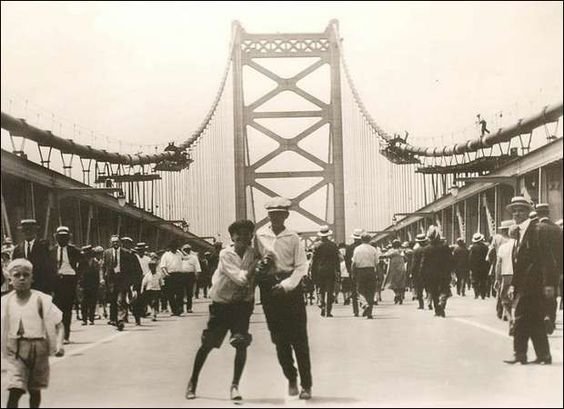
Before departing Philadelphia, Coolidge also visited the Benjamin Franklin Bridge. Then known as the Delaware River Bridge as it was the only span of the Delaware River in Philadelphia, the construction of the bridge was an engineering marvel. At the time of its construction, the 1,750 foot span of the bridge across the Delaware, was the longest suspension bridge in the world. Opened just days earlier on July 1, 1926, Coolidge walked across the bridge just as hundreds of thousands had done in the days and years after its opening. Coolidge crossed the bridge into Camden, New Jersey, where Coolidge participated in a tree planting, and the tree Coolidge helped to plant, still stands in Camden today.
Coolidge's visit and his speech also became national news and reports on the visit where printed in papers across the nation. Below, the Boston Globe reported on Coolidge's visit to Philadelphia in a headline which read, "Coolidge Praises Colonial Pastors, 35,000 Brave Drizzle to Hear Address at Philadelphia, President Credits Great Declaration to Spiritual Leaders of 1776."
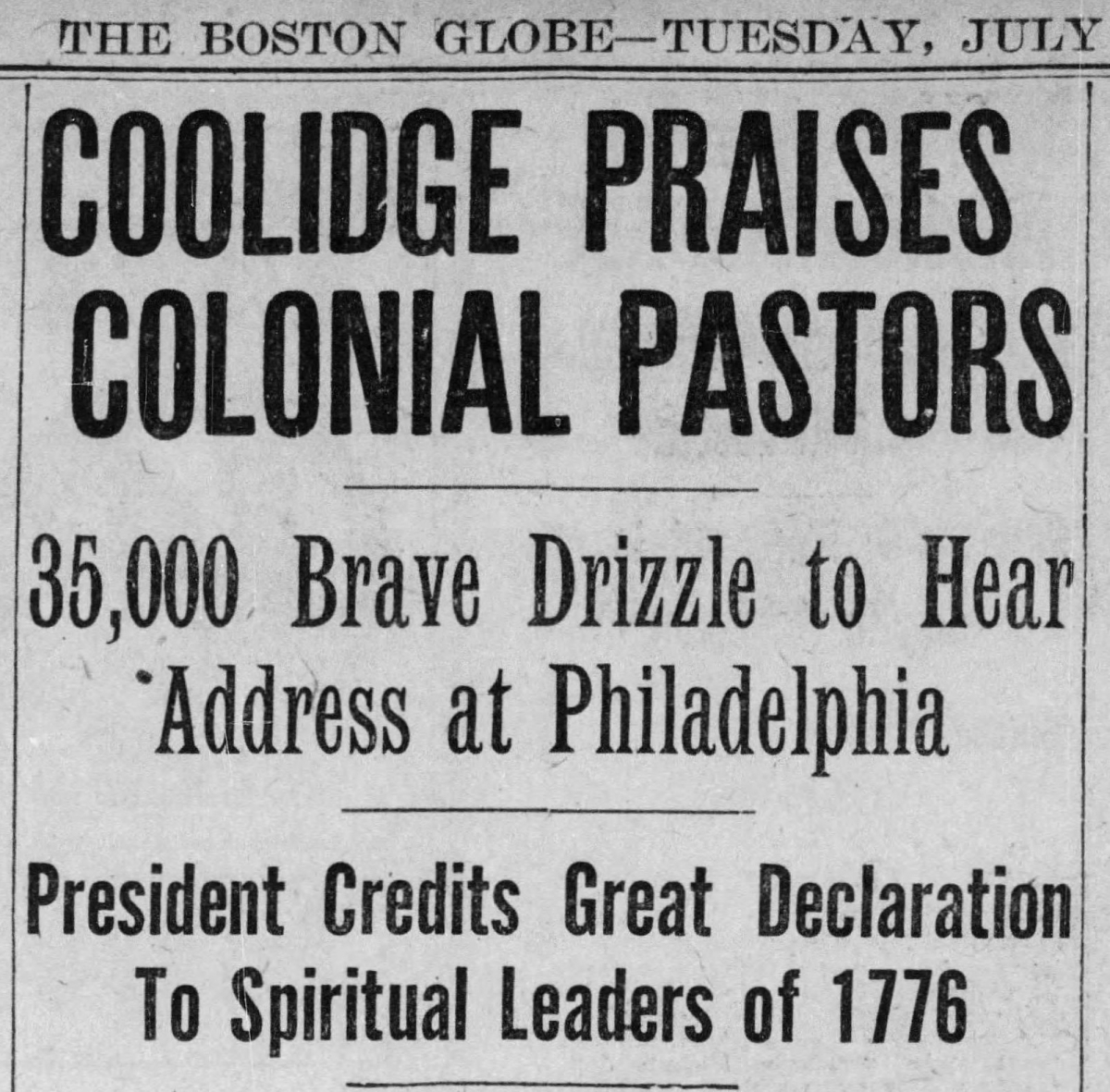
Coolidge's Visit Today
Although much was built for the Sesquicentennial Exposition, most was designed to be temporary and was demolished soon after the exposition came to an end. One of the longest lasting relics of the exposition was the Stadium that Coolidge spoke within. It eventually came to be known as JFK Stadium and hosted many events throughout its history including Live Aid.
Independence Hall and the Liberty Bell, which is no longer housed in Independence Hall, and now sits across the street in the Liberty Bell Pavilion, are both stops on The Constitutional Walking Tour of Philadelphia!



